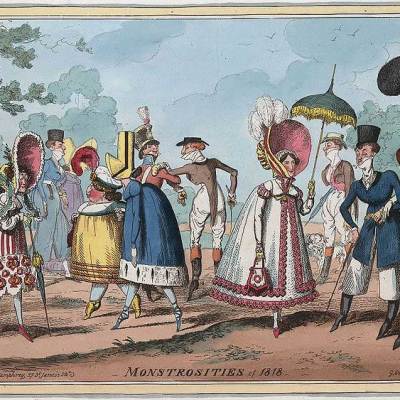From the September issue of Apollo: preview and subscribe here
A recent, well-publicised episode that has swiftly passed into art-world and academic folklore is Barack Obama’s swipe at art history during a speech made in January 2014. ‘I promise you,’ he said, ‘folks can make a lot more potentially with skilled manufacturing or the trades than they might with an art history degree.’ Numerous art historians made a spirited defence, including Ann Collins Johns of the University of Texas. In a handwritten letter to her, President Obama attempted to make reparation: ‘Let me apologize for my off-the-cuff remarks. I was making a point about the jobs market, not the value of art history. As it so happens, art history was one of my favorite subjects in high school, and it has helped me take in a great deal of joy in my life that I might otherwise have missed.’ Art history as life-enhancing but not career-making, then. Is this damning with faint praise?
Personally, I am thrilled that, firstly, the president of the United States was taught art history at school, and secondly that his written comments underline how the subject can have a lasting, positive impact on an individual – whether they decide to pursue it into adulthood as a course of study, for work, or (as in Obama’s case) for leisure. After all, it’s the Obamas of this world – as non-specialists, that is – who make up the majority of visitors to art galleries and art exhibitions, buyers of art books, viewers of arts programmes and so on, not people like me who studied art history at university and have made a career as a curator. But, when trying to make sense of the status of art history in schools, or even making a case for its vital importance in education at any level, Obama’s poor opinion of the subject’s economic value is current and widespread, and thus needs to be tackled head on.
How often have we heard about the impact of higher education fees in the UK, and the increasing burden of student debt, on what young adults choose to go on and study? ‘What am I going to “do” with my humanities degree when I graduate?’ is often the first question to be asked, and for very good reason, given much-publicised concerns about youth employment prospects and the UK government’s continued emphasis on STEM subjects (science, technology, engineering and maths).
The response from some art historians (myself included) to the challenge posed by market forces has been to focus on the simple fact that art history does not lead necessarily to only two career choices as a university lecturer or museum curator. This argument was well made by Matt Lodder, a lecturer at the University of Essex, in a passionate and informative article in The Independent titled ‘At a loss for what to do? Why not History of Art?’ (15 August 2013). Having run numerous careers days for undergraduate and postgraduate students, Lodder noted that the speakers at these events (to use his list) covered the areas of media, advertising, museums and galleries, education (schools, universities, and cultural institutions), conservators, auctioneers and antiques specialists, charities, publishing, lawyers, PR, fashion, and journalism. The list could easily go on.
That an art-history trained graduate has highly desirable and eminently transferable skills across a range of art and non-art specific professions ought to be very good news for art history going forward, especially as there is evidence that the areas of the UK economy related to culture are growing faster than others, and outperforming the economy as a whole. On this subject, the Creative Industries Federation’s recent policy report, How public investment in arts contributes to growth in the creative industries (July 2015), makes for a positive, upbeat read. As far as art history is concerned, however, data from the Joint Council for Qualifications (JCQ) and the Universities and Colleges Admissions Service (UCAS) gives us reason to pause.
In JCQ data for students sitting A-level examinations, art history is included in ‘art and design’ subjects. In 2014, ‘art and design’ counted for 5.4 per cent of the total number of students, a small increase from the 5.1 per cent recorded in 2002, when such data was first correlated, but nonetheless a broadly healthy figure when compared to 2014 figures for traditional heavyweights such as English and maths (about 10 per cent each), economics (3.2 per cent) and history (6.3 per cent). UCAS puts art history in a group of degree subjects called ‘history by topic’, which also includes medical history and history of economics (it is assumed here that art history makes up the bulk of this group). Since 2009, the proportion of ‘History by Topic’ applications to total student applications has been falling every year. In 2009, the proportion of applications was just 0.29 per cent. In 2014 the proportion was 0.2 per cent. That may seem a relatively small decrease from a very low starting point, but given the large and growing number of students applying to UK universities overall, had ‘History by Topic’ maintained its 2009 level, 2014 would have seen 8,200 applicants, rather than the actual number of 5,545. So, is it the case that the UK economy will need a growing number of people well versed in culture (which art history is eminently well placed to deliver), but that there are fewer and fewer potential art historians?
A related aspect of the art history ‘brand’ arguably in need of attention is that it is perceived – to quote Lara Prendergast, writing on The Spectator website last year – ‘as a posh subject, studied by posh girls’ (4 March 2014). Prendergast expressed surprise in 2014 at the bad press that art history continued to attract, but then the statistics she quoted in her article were pretty eye-popping. Out of some 3,000 state secondary schools, only 17 schools offered A-level history of art, and only 15 sixth–form colleges. This compared with over 90 fee-paying schools – which only 7 per cent of UK-based children attend – that offered the subject. I’m not sure that attending a private school necessarily makes someone ‘posh’, nor do I know what the proportion of, say, art curators in the UK are privately as opposed to state-educated. And what can I say about the gender bias, except that it does indeed exist?
As far as my own experience is concerned, I went to state primary and secondary schools in West London, and cannot remember any form of art history being taught, even in art classes – let alone it being offered as a formal course leading to a qualification. However, I do remember going on occasional school trips to art galleries and museums, an informal and unguided activity in my case, but one that has since become more strategic, structured and widespread in state-school programmes in collaboration with museum and gallery learning departments (see Ben Street’s article in Apollo, April 2015). Such exposure to art and art history, and the impact it may well have, is necessarily more difficult to quantify than the stark statistics quoted by Prendergast. The relative merit of formal and informal learning, whether it forms part of a subject-specific course or a wide-ranging, holistic education, is not the point. As far as art history is concerned, we need both – and given the evidence, more of both too.
Admittedly, art history is not the only subject that seems to be absent in classes at state schools and relatively prominent in those of private schools, and to have suffered negative press as a result. Classics, for example, has received attention over the last few years, as a subject that has been labelled by turn ‘irrelevant’ and ‘elitist’, but which has been actively promoted through ‘Classics for All’, a national charity for classics in school. This was established in 2010, with the aim of making classics available in every school in the UK. Is there a comparable campaign, with champions, for art history?
Since its foundation in 1974, the Association of Art Historians (AAH), of which I am currently Chair, has been committed to the promotion of art history in all schools. Indeed this commitment featured in the Association’s first ever press release, and has been reaffirmed by subsequent boards of trustees. ‘Art History in Schools’ is one of the Association’s designated members’ interest groups, which is run by and for teachers in UK schools and colleges. A positive reflection of the demand for learning support and resources for students and teachers is AAH’s schools outreach programme, ‘Art History in State Schools’, which was trialled at two London schools in 2014–15, and the success of the AAH annual schools conference, ‘Ways of Seeing’, which has been going since 2008. This one event attracts 300 students and teachers to the British Museum each year, a third of which, through the provision of 100 pre-funded tickets, are from state schools. The 2015 conference sold out in just eight days.
There are many individuals, groups and institutions that are engaged in similar activities and initiatives to promote and support the teaching of art history across the country. Where the AAH is making a unique and, it is hoped, game-changing contribution is through the long-awaited publication this September of the first A-level art history textbook, Thinking about Art: A Thematic Guide to Art History (Wiley). In approach and format, it mirrors the AQA A-level examination in history of art (art of the Western world) and is thus not a history of art in itself but an invaluable ‘tool kit’ for teachers, students and prospective students to ‘understanding, interpreting and, ultimately, appreciating’ works of art and architecture. As such, it is just as accessible and useful to a broad art-interested readership.
How the textbook works in practice will be key to its effectiveness in schools. Its author, Penny Huntsman, is an experienced teacher in art history and other subjects. She makes it very clear that, whether in hardcopy or in downloadable format, Thinking about Art is designed to support existing teachers of art history, encourage teachers to take up the subject or (given the inclusive, interdisciplinary nature of art history) to incorporate it into their teaching programmes for other subjects, such as art, literature, classics, history, and psychology. In so doing, the textbook is poised to address the budgetary restrictions and lack of subject-qualified staff – factors often quoted as stumbling blocks for schools, state or private, when they are deciding, on balance, whether or not to offer art history. From September, I feel confident that the balance will be tipping in our favour.
Christine Riding is Chair of the Association of Art Historians, and Head of Arts and Curator of the Queen’s House at the Royal Museums Greenwich.



